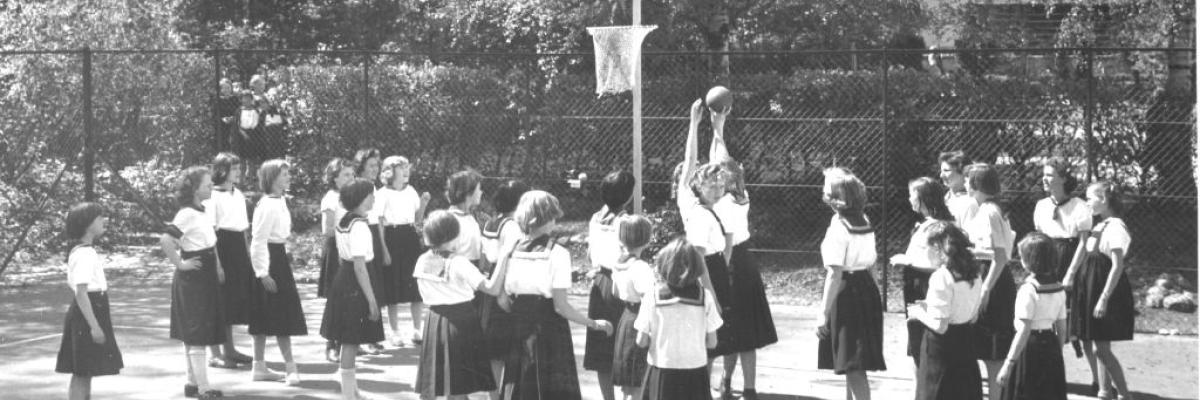
History
Rygaards School’s history dates back to September, 1909, when the Assumption Sisters founded their first school in Denmark, with twelve students.
Marie Eugénie Milleret had founded the Religious of the Assumption in Paris in 1839. Her essential vision was one of transforming society through education. As a teaching order, education was seen as a process by which the human person is liberated and society transformed.
Education is to allow the good in every person to break through the rock that imprisons it and bring it into the light where it can blossom and shed its light...
Early beginnings
The first Assumption School in Denmark began with the same aims; designed to educate young girls to live harmoniously on a Christian foundation.
The following year, the number of students doubled to twenty-four, so the Sisters, needing to expand, purchased two adjacent villas. After the First World War, the school continued to prove so popular that in 1921, the Sisters moved to the former Jesuit college, St. Andreas College in Ordrup, where there was ample space. It was from here that, in 1930, both the convent and school moved to the old country house, Rygaards, in Hellerup and the school was named, Rygaards French School. Originally, the intention was to conserve the old country house as it was, but it became necessary to adapt and to expand.
In 1935, St. Theresa Church was built. The church was a very important addition to the everyday life of the school. This also became the church for the local Catholic Parish.
Further expansion
After the Second World War, it was possible to start a Danish department alongside the so-called 'Polyglot' department, due to another large influx of students. Until then, Danish and International students had been taught together, but now it was felt that there was a need to create a state-supported, Danish private school, and classes were separated. At that point, boys were admitted for the first time.
In 1958, the Danish department moved into two new wings on three floors. The architect was the late Cock-Clausen, who solved the difficult task of building a new and functional building while retaining the character of the old country house. The “Polyglots” remained in the old building.
As the world changed, English became the dominant language, and the teaching in the International department changed from French to English, based on the English school tradition. French was kept as a compulsory subject in both departments.
Finally, in 1968, the International department became known as Rygaards School, and was integrated with the Danish department under one Principal.
From 1971, as one school, it could now receive a full state subsidy. The International department was obliged to teach Danish as a subject and to organise the holidays in alignment with the Danish school system.
In 1973, the former Catholic St. Canute School merged with Rygaards School. A building with eight classrooms was built to house the increased number of students.
In the beginning of the eighties, the Sisters moved their convent to another part of Copenhagen. Their bedrooms and living rooms were remodelled to accommodate the school.
A modern and well-equipped school
The school is now over 100 years old. The number of students has grown from twelve to almost a thousand, but the present school continues to follow the aims and aspirations of those early beginnings in 1909. Namely to offer quality education and to strengthen the self-confidence of each individual student, to cultivate in him or her a sense of responsibility, to develop a willingness to help in the community, to encourage respect for others and to foster a sense of ethical awareness.
Today, the school is a modern well-equipped school with more than 1000 students representing 80 different nationalities.